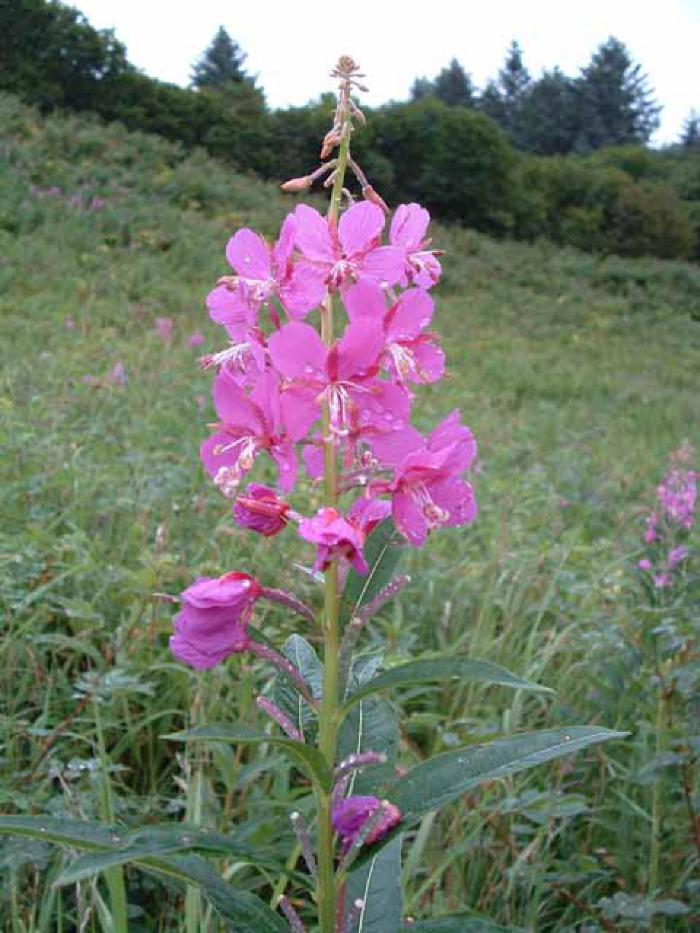Fireweed — Cillqaq

Late summer in the Kodiak Archipelago is brightly heralded by thousands of fireweed blossoms. This widely distributed perennial plant is a member of the evening primrose family, and it grows in both a dwarf and tall variety in the Kodiak region. The tall variety (Epilobium angustifolium) has narrow leaves, bright pink flowers, and long stalks that can reach up to eight feet tall. This variety thrives in meadows, open forests, hillsides, and anywhere the ground has been disturbed. The dwarf variety (Epilobium latifolium) is more common over gravely substrate and grows only about a foot tall. As fall approaches fireweed leaves turn from dark green to a brilliant red and release seeds coasted in a downy fiber.
Fireweed has long been both a source of food and raw material in Alutiiq communities. In the past, the plant served as roof thatching for sod houses, especially in interior regions where ryegrass was not available. And steam bathing switches were made from fireweed stalks.
Young fireweed leaves are often eaten fresh, although they also can be dried and used to make a soothing tea. Fireweed shoots are also harvested and may be cooked or eaten raw. In Nanwalek, an Alutiiq community of the Kenai Peninsula, people cook fireweed leaves in seal oil. Today, many people harvest fireweed blossoms to flavor sweet syrup for pancakes and deserts.
